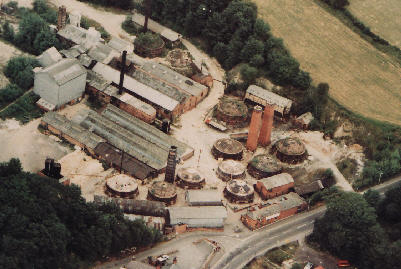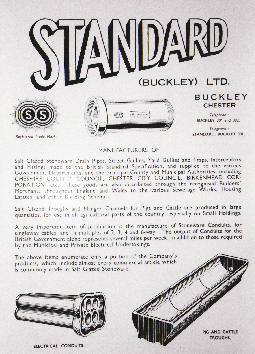

Brick Works details are described in full in the book

|
1940s advertisement for the Standard Works at Buckley.
|
|
Whilst part of the book deals with the history and development of the north east Wales brick making industry and the loves and working practices of the men themselves, the main section is devoted to a concise catalogue of the brickworks themselves. The basic history of each of these works is covered, including all relevant dates and principal events, Company name changes and reasons for their closures. Evidence from legal documents is also included where appropriate, as well as excerpts from newspapers, which highlight unusual events in the history of the works. Some of these brickworks were little more than cottage industries, such as the brickyard at Hope Hall, which manufactured bricks to upkeep the farm estate. It was a small yard such as this which formed the origins of Roberts and Maginnis Silica Brickworks shown above. This was a fairly moderately sized concern, whilst such factories as that at Penybont were on a much larger scale. Their works’ catalogue of 1890 says: The several machines for working the clay are capable of turning out two million goods of various sizes and forms per month. These machines have been designed specially for these works and are of unusual strength, the lighter forms generally in use having been found totally unequal to the task of dealing with this kind of clay. The works poses a large engineering shop and presses between sixty to seventy in number. The machinery is driven by 16 engines of various sizes with an aggregate power of 500 horse. The kilns and ovens number nearly 80 and the amount of coal consumed reaches about 3000 tons per month. The whole of the works are lighted with gas and the different departments are united by means of the telephone and connected with the Ruabon post office by wire. |


| Copyright©Designed by Chris |